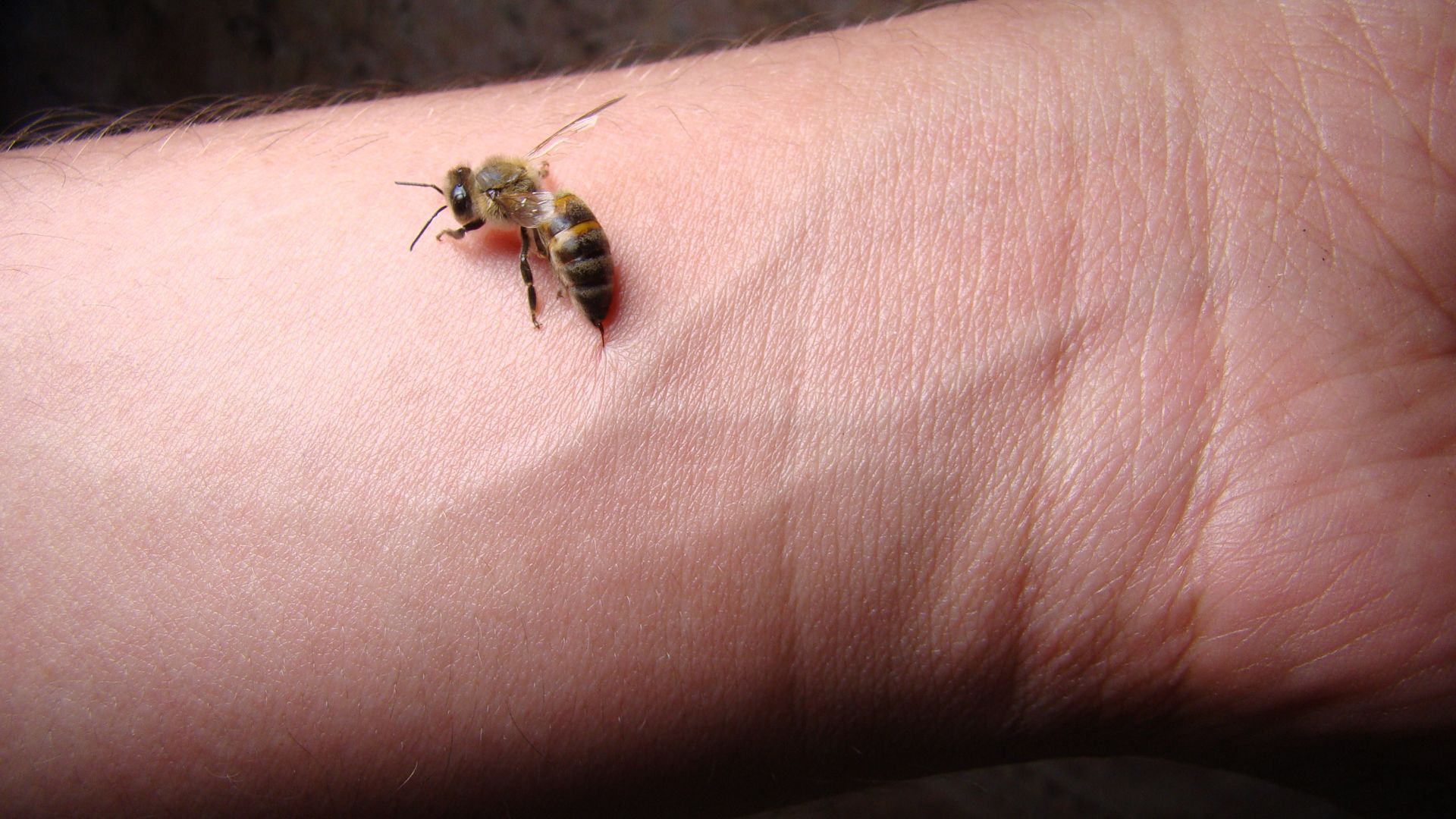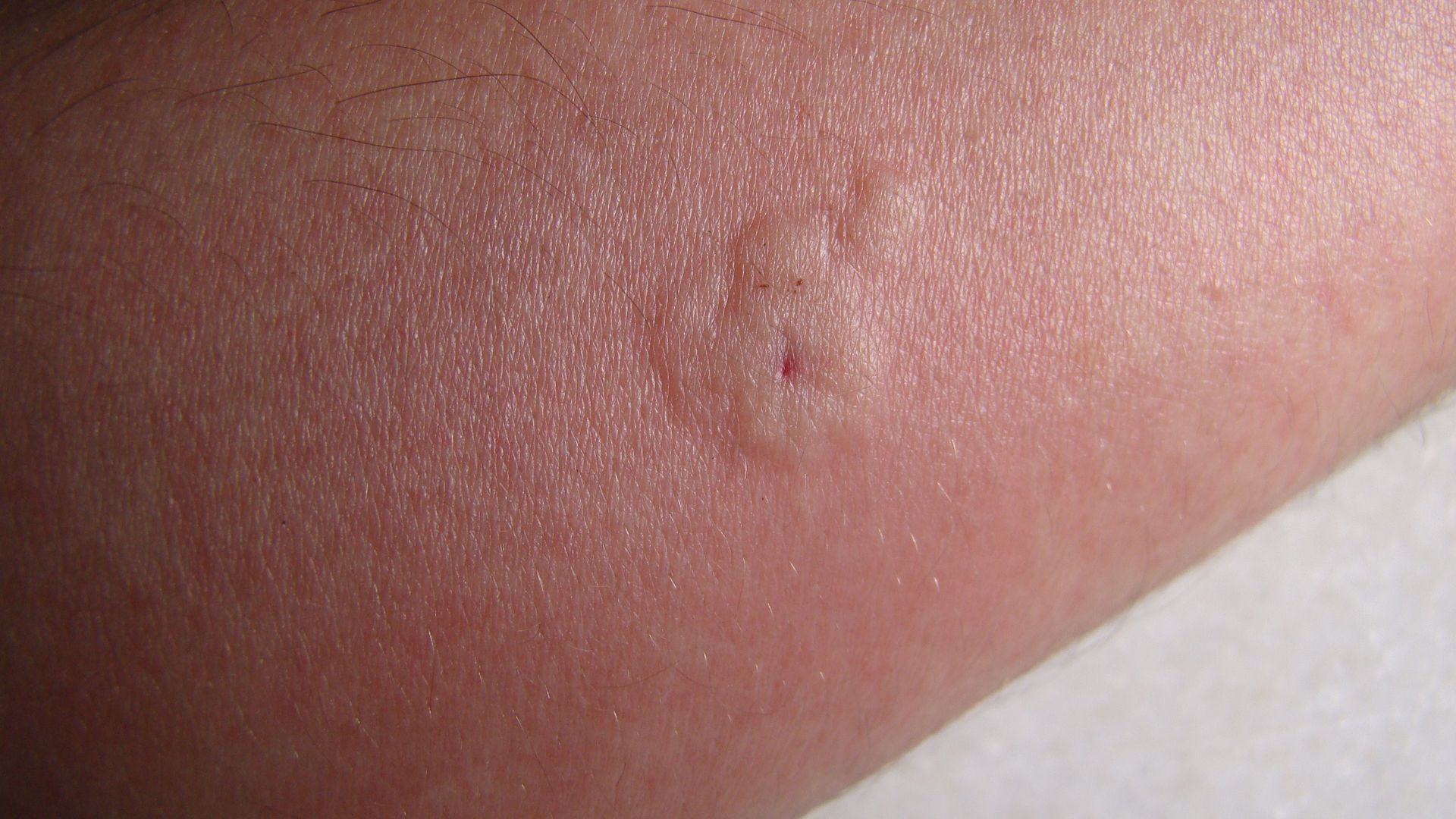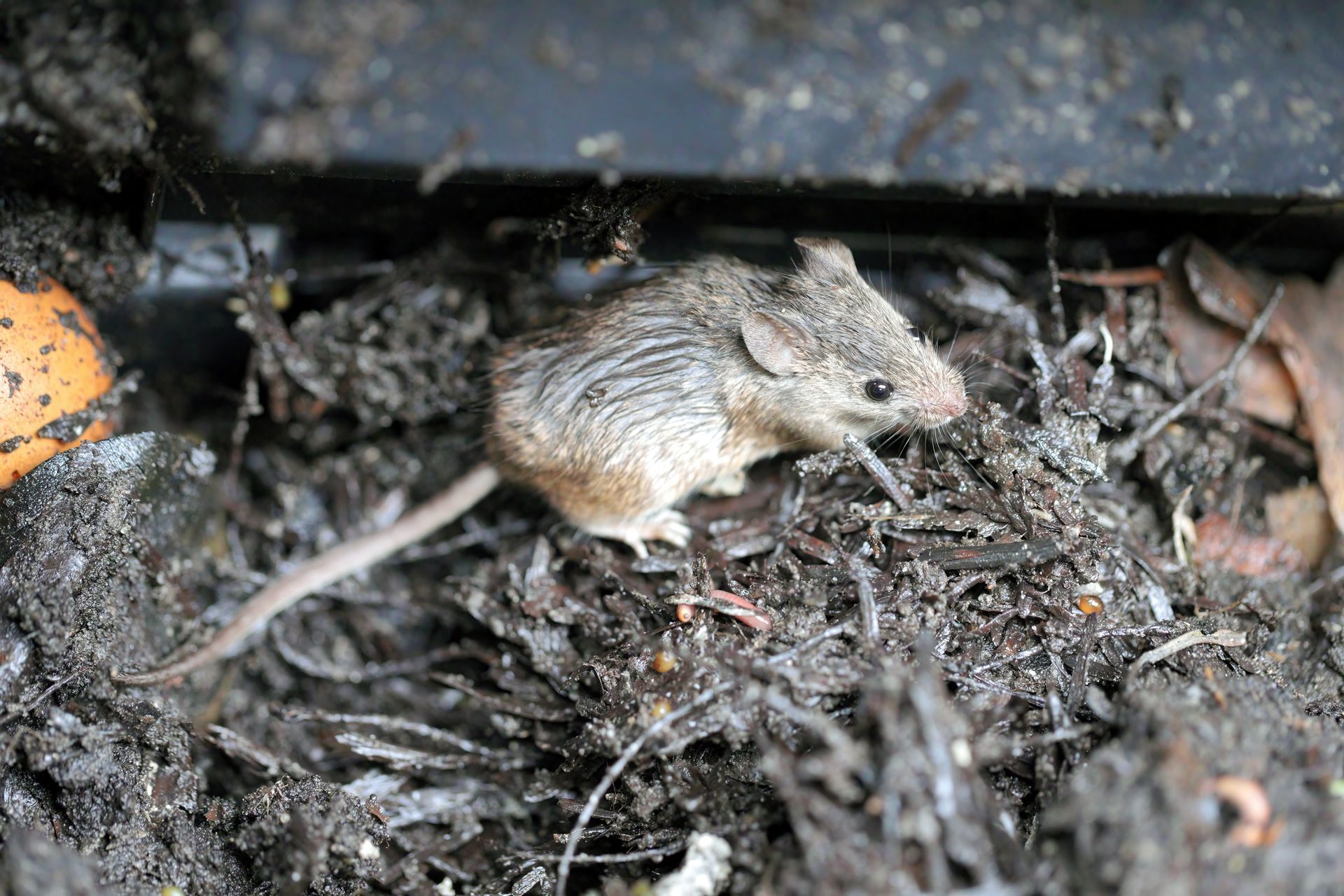Do Bumble Bees Sting Humans?

Female bumblebees possess the ability to sting if they feel threatened or disturbed. They are generally docile when compared to other stinging insects like wasps and hornets, but they will use their stingers to defend themselves or their colony. When a bumblebee decides to sting, it’s usually because their ground-based nests are disturbed or accidentally dug up. While bumblebees typically aren’t much of a threat, they can sting multiple times due to having a smooth stinger without barbs which can amplify the impact of their sting.
What Are Bumble Bees?
Bumblebees are found all over the world and play an important role as pollinators in their respective ecosystems. These important pollinators ensure that plants are able to flower and bear seeds for the next generation of plant growth. Without insects like bumblebees to pollinate, plant life in general would suffer catastrophic losses. This highlights the importance of these insects and why they should be left alone whenever possible. This is also important as bumblebees do have stingers and leaving bumblebees alone is a good way to avoid getting stung.
Do All Bumble Bees Have Stingers?
Only female bumblebee workers and the queen possess stingers which they can use when they feel threatened. It's crucial to note that male bumblebees which are known as drones, lack stingers entirely and cannot sting. The reason female bumblebees can sting is because they possess a specialized structure called an ovipositor. This structure was originally an egg-laying apparatus but evolved over time into a stinger in female bees. The reason for this is because female bumblebees were often the ones defending their nests against threats while males’ sole purpose was to mate. Male bumblebees never needed an ovipositor and as a result never developed stingers.
Why Do Bumble Bees Sting?
Bumblebees are generally non-aggressive, but females still possess stingers primarily as a means of defense. Females play a pivotal role in safeguarding the colony and repelling predators. In certain situations, this protective behavior requires the use of their stingers. Queen bumblebees also have to use their stingers against rival queens that may be vying for their nesting site. While bumblebees are generally less defensive than honeybees, they can become particularly protective in proximity to their nests which hold their pollen stores and larvae.
How Do Bumble Bees Sting?
When bumblebees sting, they inject venom into their target through a smooth, hollow, barbless stinger. This design allows female bumblebees to retract their stinger without it getting lodged in the skin which enables them to sting multiple times if necessary. This is different from honeybees that possess a barbed stinger that becomes embedded in the skin. When a honeybee attempts to fly away after stinging, its stinger along with the attached venom gland gets ripped from its abdomen which causes the honeybee to die. This distinction means that a provoked bumblebee can potentially deliver multiple stings, whereas a honeybee can sting only once.
Are Bumble Bee Stings Painful?
Bumblebee stings are considered one of the more painful bee stings because they have a smooth stinger that can sting multiple times in succession. This repeated stinging amplifies the pain that is felt when a bumble bee stings because each sting penetrates the skin and injects a painful venom that results in swelling and redness. Many people wonder how painful a bumble bee sting can be. This can only be answered objectively using the Schmidt Pain Index. This index represents a scale that categorizes the severity of stings from various insects ranging from bees, ants, wasps, and hornets. A 1 on the pain index is the least painful with 4 being the most painful. Honeybee species generally register at a 1 but bumblebees can rate as high as a 2 due to their repeated stinging.
Reactions to Bumble Bee Stings
Bumblebees inject venom that can result in a variety of symptoms depending on an individual’s sensitivity. The most common reaction is a localized painful reaction that is accompanied by swelling, redness, and itchiness. This pain results immediately and can last between a few hours to a few days after getting stung. While most people experience these minor reactions, the severity of a reaction can vary based on the number of times they are stung and where the sting occurred. Some areas tend to be more sensitive to swelling due to their proximity to vital physiological structures. Getting stung around the mouth or throat can result in swelling that closes off the windpipe so it’s important to be cautious if stung in those areas. While many reactions are mild and short-lived, individuals with an allergic sensitivity to the venom might experience more severe symptoms which can require immediate medical attention.

Allergic Reactions to Bumble Bee Stings
A small percentage of the population experiences severe allergic reactions to bee stings. Approximately 1% of individuals may develop an allergic reaction after repeated stings which can range from mild to life-threatening. These reactions are categorized into four levels of increasing severity:
- Level 1 - Generalized itching, redness, and swelling across the body.
- Level 2 - Symptoms of Level 1 accompanied by gastrointestinal issues like vomiting and diarrhea.
- Level 3 - Symptoms from Levels 1 and/or 2, combined with respiratory challenges such as difficulty breathing or a sensation of suffocation.
- Level 4 - Incorporating symptoms from the previous levels, plus cardiac symptoms like heart palpitations, fainting, and potentially anaphylactic shock.
This can also result in dizziness, excessive sweating, and cold shivers.
It's important to note that allergic reactions typically manifest often within 30 minutes after getting stung and can include symptoms distant from the sting site. A sting on an arm or leg can result in body rash with itching, swelling of the face or neck, respiratory difficulty, and severe cardiovascular reactions. Given the potential severity of these reactions, it's important to seek medical attention immediately if any signs of an allergic response are observed.
How to Treat Bumble Bee Stings?
The typical reaction from getting stung by a bumblebee is a localized, non-allergic response that comes with swelling, redness, and itchiness at the sting site. In rare instances, this reaction might spread beyond the immediate sting area and present as a rash that covers the body or any one of the extremities. Getting stung by a bumblebee should be followed by:
- Cleaning the Area: Wash the sting site with antiseptic soap and water to prevent infection. The sting site may itch after some time so it’s important to not scratch the wound because doing so may introduce bacteria and cause a secondary infection.
- Reduce Swelling and Pain: Apply an ice pack to sting site to reduce any swelling and numb localized pain. Anti-inflammatory medication can also help keep swelling down.
- Manage Itchiness: Use over-the-counter antihistamines or anti-itch ointments containing diethyl-m-toluamide to help manage any itching. Topical creams designed for insect stings and bites can also provide relief.
- Seek Medical Attention for Allergic Reactions: Some individuals have a severe allergic reaction to getting stung by a bee. Seek emergency medical attention immediately if symptoms like respiratory problems, rapid heartbeat, or swelling of the throat occur.
It's essential to keep an eye on the sting site and consult a healthcare professional if the reaction seems unusual or if there are concerns about potential complications.
Treating an Allergic Reaction
In the event of an allergic reaction to a sting, the severity and response can vary. For grade 1 symptoms, it's advisable to consult a general practitioner who might recommend monitoring the situation because reactions can intensify over time. However, for more severe grade 3 or 4 reactions, immediate hospitalization is essential. Treatment for allergic reactions often involves prescription-strength antihistamines, like clemastine, which counteract the swelling induced by the venom's histamine. In certain cases, corticosteroids like Dexamethasone, might be prescribed. For particularly severe reactions, adrenaline is the primary treatment because it stimulates the heart, narrows blood vessels, and opens airways. Adrenaline can be self-administered using an EpiPen which is typically prescribed to individuals with a known allergy to bee stings. It is important to note that the use of an EpiPen is only a temporary fix that is designed to give someone suffering from a severe reaction enough time to get to a hospital. Medical attention is still needed for a severe reaction even after an EpiPen is injected.
How to Avoid Bumble Bee Stings
It's important to understand the behaviors of bumblebees and why they might sting in the first place to minimize the risk of getting stung. They generally only sting if they are threatened or disturbed so it's important to not disturb any bumblebees you encounter. Stay calm and do not swat them because sudden movements may be seen as a threat. If a bumblebee sting occurs, gently brush them off and move away quickly. If you identify a bumblebee nest on your property, it’s important to contact a pest control professional for guidance and potential removal. Remember, the key is to avoid provoking them so staying calm and refraining from sudden movements or disturbances can significantly reduce the likelihood of a bumblebee sting.
How to Get Rid of Bumble Bees
If bumblebee activity becomes a concern due to proximity to living spaces, there are measures you can take. Bumble bee colonies are annual which means a queen establishes a new nest each year. By the following year, the previous colony will have naturally dispersed or died off, so recurring issues with the same nest are unlikely. To deter bumble bees from nesting around your home, reduce potential nesting sites. Clearing brush and grass piles will help remove any cover that bumble bees might have and maintaining moist ground conditions will keep soil wet which isn’t conducive to bumblebee tunneling. Ensure trash cans are cleaned out regularly and are covered with tight-sealing lids to keep bees out. If a nest is discovered, contact EcoGuard Pest Management for safe and effective solutions rather than attempting removal on your own.
Contact EcoGuard Pest Management if You Are Dealing with Bumble Bees
If you're dealing with a bumble bee issue near your home or property, it's important to approach the situation with care because of the potential danger involved and the important role they play in their habitats. At EcoGuard Pest Management, we prioritize both the safety of our clients and the preservation of these beneficial insects. Our team of professionals is equipped with the knowledge and tools to address your bumble bee concerns effectively and humanely. Contact EcoGuard Pest Management today and let us provide you with a sustainable and safe solution.
Bumble Bee Stinger FAQs
Does a bumble bee sting or bite?
Bumble bees do not bite. However, female bumblebees can sting if they feel threatened. Only bumble bee queens and female workers have a stinger that can sting. This is due to evolutionary changes that caused their ovipositors to develop into defensive tools.
Do bumble bees sting hurt?
A bumble bee sting can be painful for many people just like stings from other bees or wasps. The pain is often described as a sharp, burning sensation that may be followed by redness and swelling. However, individual reactions can vary, with some people experiencing more discomfort than others.
Do bumble bees harm humans?
Bumble bees are generally not aggressive and prefer to go about their business of foraging and pollinating. Female bumble bees can sting if they feel threatened or if their nest is disturbed. While most people experience a localized reaction to a sting, a small percentage may have allergic reactions that require medical attention.

















